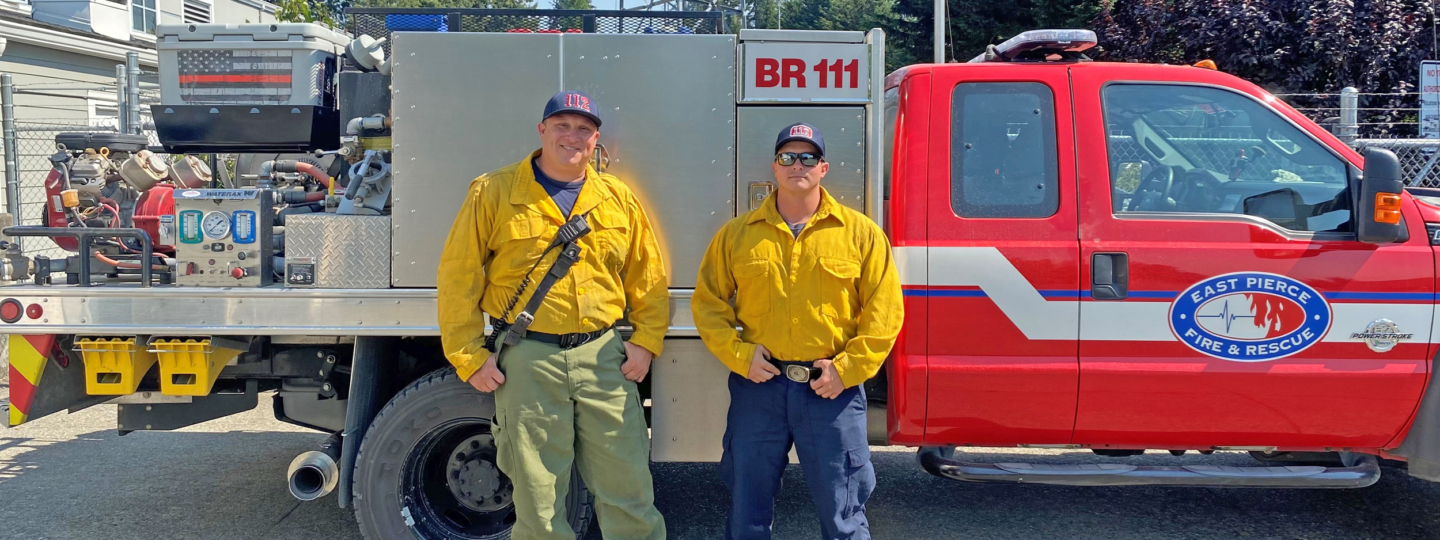Wildfire Prevention and Preparedness

Preventing and Preparing for Wildfires
Now is the time to create defensible space perimeters by clearing flammable debris away from homes and structures. Make sure property entrances are clearly posted and have adequate emergency vehicle turnaround space.
Take these specific actions long before an evacuation is necessary:
- Clear any flammable materials from around the home.
- Construct roofs and exterior walls from non-combustible or fire resistant material such as slate, tile, sheet iron, aluminum, brick or stone.
- Treat wood siding, cedar shingles, exterior wood paneling and other highly combustible materials with fire retardant chemicals.
- Clean roof surfaces and gutters free of pine needles, leaves, and branches regularly.
- Space landscape plants to limit fire from spreading to surrounding vegetation or structures.
- Maintain fuel breaks around all structures
- Store gasoline only in approved containers, and well away from occupied buildings.
- Store firewood and other combustibles away from structures.
- Keep firefighting tools (such as ladders, shovels, rakes and water buckets) handy, and water hoses connected.
- House numbers and all street signs should be clear of overgrowth and always be visible.
- Clear roads and driveways of vegetation overgrowth so fire vehicles have room to maneuver.
- Place a lawn sprinkler on the roof, which can be turned on when evacuating to wet the roof.
Prepare An Evacuation Kit
Another important step is preparing an evacuation kit. Items should be put in a container that can be easily loaded into a vehicle for a quick departure. Items to include:
- Flashlight
- Battery-powered radio with additional batteries
- First aid kit
- Medicines, prescriptions and eyeglasses
- Water (at least one gallon per person and enough for three days for each person in the household)
- Change of clothing
- Sleeping bags and pillows
- Cash and credit cards
Discuss with family members how to contact one another if a wildfire comes near when family members are separated. Plan evacuation routes and identify relatives or friends outside the immediate area that can be contacted. Finally, make sure your pets have collars and identification tags and take your pets with you if you need to evacuate. While some shelters won’t accept pets, an increasing number of communities are organizing pet shelters when large evacuations are necessary. Check with your local Humane Society, animal shelter or veterinarian.
Helpful Handouts
Firewise: How to Prepare Your Home for Wildfire
Firewise: How to Prepare Your Home for Wildfire (Spanish)
Firewise: Wildfire Risk Reduction Safety Tips
DNR: Defend Your Home From Wildfire
DNR – Defend Your Home From Wildfire (SPANISH)
Ready Set Go Evacuation Levels
Fact Sheets
Firewise Fact Sheet: Exterior Sprinklers
Firewise Fact Sheet: Immediate Noncombustible Zone
Firewise Fact Sheet: Attics and Crawl Spaces
Fire-Resistant Plans and Landscape
Fire-Resistant Plants for Home Landscapes
Arborvitae and Juniper Alternatives
Dealing with Wildfire Smoke
Stay Healthy During Wildfire Season
The Right Respirator and Proper Fit
Wildfire Smoke and Poor Air Quality